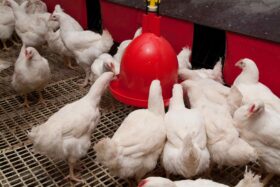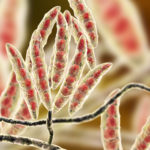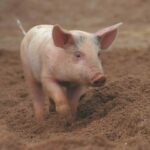
Antimicrobial resistance (AMR) is a major threat to global public health. It is largely caused by the overuse of antibiotics in human medicine and agriculture. In intensive poultry production most antibiotics are used as antimicrobial growth promoters and/or used as prophylactic and metaphylactic treatments to healthy animals. Reducing such antibiotic interventions is crucial to lowering the incidence of AMR. However, antibiotic reduction often results in undesirable performance losses. Hence alternative solutions are needed to boost poultry performance. Phytomolecules have antimicrobial, digestive, anti-inflammatory and antioxidant properties, which could make them key to closing the performance gap.
Poultry performance depends on intestinal health
Poultry performance is to a large extent a function of intestinal health. The intestines process nutrients, electrolytes and water, produce mucin, secrete immunoglobulins and create a barrier against antigens and pathogens.
In addition, it is an important component of the body’s immune defense system. The intestine has to identify pathogens and reject them, but also has to tolerate harmless and beneficial microorganisms. If the intestines do not function properly this can lead to food intolerance, dysbiosis, infections and diseases. All of these are detrimental to feed conversion and therefore also to animal performance.
Antibiotics reduce the number of microorganisms in the intestinal tract. From a performance point of view this has two benefits: first, the number of pathogens is reduced and therefore also the likelihood of diseases; second, bacteria are eliminated as competitors for the available nutrients. However, the overuse of antibiotics not only engenders AMR: antibiotics also eliminate probiotic bacteria, which negatively impacts the digestive tracts’ microflora.
Products to boost poultry performance may be added to their feed or water. They range from pre- and probiotics to medium chain fatty acids and organic acids to plant extracts or phytomolecules. Especially the latter have the potential to substantially reduce the use of antibiotics in poultry farming.
Phytomolecules are promising tools for antibiotic reduction
Plants produce phytomolecules to fend off pathogens such as moulds, yeasts and bacteria. Their antimicrobial effect is achieved through a variety of complex mechanisms. Terpenoids and phenols, for example, disturb or destroy the pathogens’ cell wall. Other phytomolecules inhibit their growth by influencing their genetic material. Studies on broilers show that certain phytomolecules reduce the adhesion of pathogens such as to the wall of the intestine. Carvacrol and thymol were found to be effective against different species of Salmonella and Clostridium perfringens.
There is even evidence that secondary plant compounds also possess antimicrobial characteristics against antibiotic resistant pathogens. In-vitro trials with cinnamon oil, for example, showed antimicrobial effects against methicillin resistant Staphylococcus aureus, as well as against multiresistant E. coli, Klebsiella pneumoniae and Candida albicans.
Importantly, there are no known cases to date of bacteria developing resistances to phytomolecules. Moreover, phytomolecules increase the production and activity of digestive enzymes, they suppress the metabolism of pro-inflammatory prostaglandins and they act as antioxidants. Their properties thus make them a promising alternative to the non-therapeutic use of antibiotics.
Study design and results
In order to evaluate the effect of phytomolecules on poultry performance, multiple feeding studies were conducted on broilers and laying hens. They were given a phytogenic premix (Activo, EW Nutrition GmbH) that contains standardized amounts of selected phytomolecules.
To achieve thermal stability during the feed processing and a targeted release in the birds’ gastrointestinal tract, the product is microencapsulated. For each , the studies evaluated both the tolerance of the premix and the efficacy of different dosages.
Study I: Evaluation of the dose dependent efficacy and tolerance of Activo for broilers
Animals: 400 broilers; age: 1-35 days of age
Feed: Basal starter and grower diets
Treatments:
– No supplement (negative control)
– 100 mg of Activo /kg of feed
– 1.000 mg of Activo /kg of feed
– 10.000 mg of Activo /kg of feed
Parameters: weight gain, feed intake, feed conversion ratio, health status, and blood parameters
Results: The trial group given the diet supplemented with 100 mg/kg Activo showed significant improvements in body weight gain during the starter period (+4%) compared to the control group. Additional significant improvements in feed conversion ratio (FCR) in the growing period (+4%) resulted in an overall improvement in FCR of 3%. At a 1.000 mg/kg supplementation, a significant improvement in FCR of 6% was observed over the entire feeding period. Hematological parameters were within the reference range of healthy birds when feeding up to 10,000 Activo/ kg of feed.
Study II: Evaluation of the dose depending efficacy and tolerance of Activo for laying hens
Animals: 200 hens; age: 20 to 43 weeks
Feed: basal diet for laying hens
Treatments:
– No supplement (negative control)
– 100 mg of Activo/ kg of feed
– 250 mg of Activo/ kg of feed
– 500 mg of Activo/ kg of feed
– 5.000 mg of Activo/ kg of feed
Parameters: weight gain, feed intake, feed conversion ratio, health status, and blood parameters
Results: Inclusion levels from 100 mg/kg of Activo onwards improved laying performance, egg mass and egg weight and reduced FCR compared to the control group. Results recorded for hematological parameters were within the reference range of healthy birds when feeding up to 5.000 mg Activo/ kg of feed.
Study III: Evaluation of the dose-dependent effects of Activo for coccidiosis vaccinated broilers
Animals: 960 broiler chickens; age: 42 days
Feed: Standard starter and finisher feed
Treatments:
– No supplement (negative control)
– 50 g of Activo /US ton of feed
– 100 g of Activo /US ton of feed
– 150 g of Activo /US ton of feed
– 200 g of Activo /US ton of feed
– 250 g of Activo /US ton of feed
– Antibiotic growth promoter (AGP)(positive control)
Parameters: weight gain, feed efficiency
Specific: In order to represent field conditions, the birds were challenged with used, homogenized litter.
Results: A clear dose response for both body weight gain and feed efficiency was observed (see Figure 1): the more phytogenic premix given, the better the birds’ performance. The group with 200g of Activo /US ton of feed showed similar performance levels than the positive control group supplemented with AGP.
Figure 1: Dose-dependent effects of for coccidiosis vaccinated broilers

Study IV: Evaluation of the dose-dependent effects of Activo for laying hens
Animals: 40 hens; age: week 20 to 43
Feed: basal diet for laying hens
Treatments:
– No supplement (negative control)
– 100 mg of Activo/ kg of feed
– 250 mg of Activo/ kg of feed
– 500 mg of Activo/ kg of feed
– 5.000 mg of Activo/ kg of feed
Parameters: weight gain, feed intake, egg production, feed conversion ratio, health status
Duration: 168 days of feeding period
Results: The laying hens showed a higher laying rate when fed with a higher concentration of phytomolecules (Figure 2). Similarly improved results were observed for the feed efficiency. The more phytogenic premix added to their diet the better feed efficiency (Figure 3).
Figure 2: Dose-dependent effects of Activo on laying rate in laying hens

Figure 3: Dose-dependent effects of Activo on feed efficiency in laying hens

In conclusion, all four studies indicate that the inclusion of phytomolecules in broilers’ and laying hens’ diet improves their performance. Increasing levels of a phytogenic premix (Activo) significantly increased the production parameters for both groups. These improvements might bring performance in antibiotic-free poultry production on par with previous performance figures achieved with antimicrobial growth promoters.
The studies also showed that microencapsulated phytogenic premixes are safe when used in dose ranges recommended by the suppliers. No negative effects on animal health could be observed even at a 100 fold / 50 fold of the recommended inclusion rate in diets for broiler or laying hens, respectively. Thanks to their positive influence on intestinal health, phytomolecules thus boost poultry performance in a safe and effective way.
By Technical Team, EW Nutrition
Literature
Manafi, Milad, Mahdi Hedayati, Saeed Khalaji, and Mohammad Kamely. “Assessment of a Natural, Non-antibiotic Blend on Performance, Blood Biochemistry, Intestinal Microflora, and Morphology of Broilers Challenged with Escherichia Coli.” Revista Brasileira De Zootecnia 45, no. 12 (December 2016): 745-54. doi:10.1590/s1806-92902016001200003.
Photo source: Aviagen















